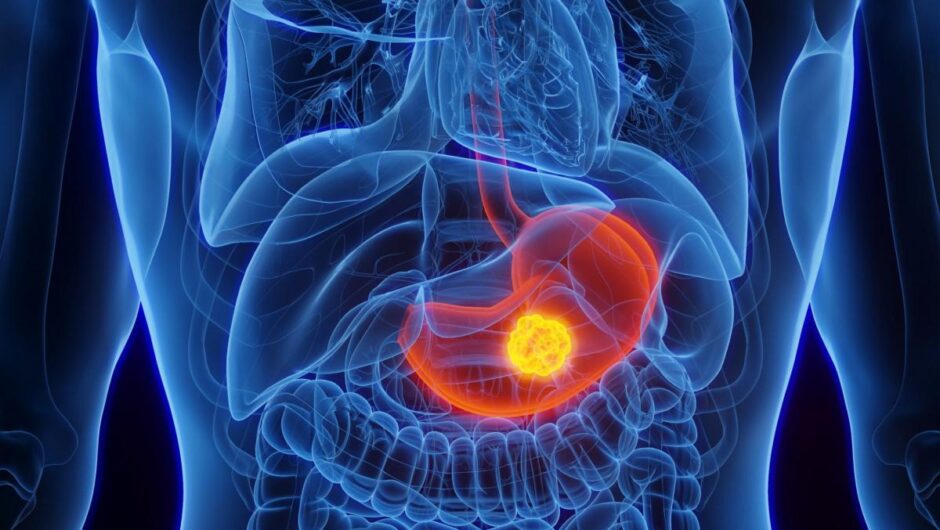[ad_1]
This article is for informational purposes only and is not a substitute for professional medical advice, diagnosis or treatment. Contact a qualified medical professional before engaging in any physical activity, or making any changes to your diet, medication or lifestyle.
When most people hear the word “POTS,” they might think about what they’re going to cook for dinner. But I associate the word with trauma, anxiety and a medical condition I battle daily.
It all started when I contracted COVID-19 in early 2023. While the majority of COVID patients resolve their symptoms in a matter of weeks, mine got worse over time.
I knew something was wrong when one day I almost blacked out in the shower. I felt dizzy, nauseous and my feet turned a deep purple in colour.
After a slew of doctors, cardiologists and rheumatologists, I was told I had POTS syndrome. But what is it, and how does it affect my life?
POTS, or postural orthostatic tachycardia syndrome, is a condition that causes a variety of symptoms when transitioning from lying down to standing up, including dizziness, fatigue and rapid heart rate. (Photo via Getty Images)
What is POTS?
POTS, or postural orthostatic tachycardia syndrome, is a condition that causes a variety of symptoms when transitioning from lying down to standing up, such as dizziness, fatigue and rapid heart rate.
Normally, your body’s autonomic nervous system balances your blood pressure and heart rate to keep your blood flowing properly throughout your body, no matter what position you’re in.
But if you have POTS, your body does not automatically balance your blood vessels and heart rate. As a result, blood pressure and heart rate can dramatically change.
“I knew something was really wrong when one day I almost blacked out in the shower. I felt dizzy, nauseous and my feet turned deep purple.”Julia Ranney
Since blood is not being properly pumped to your brain, it can also pool in your legs, causing your feet and legs to change colour.
You can get POTS after getting an infection, condition or disease like COVID, diabetes, Lupus or Lyme. It could also develop after contracting anything else that attacks your autonomic nervous system.
A rapid increase in heart rate when transitioning from lying down to standing up is a key indicator of POTS. (Photo via Getty Images).
My diagnosis
Other than nearly blacking out while showering, my first major symptoms of POTS were extreme fatigue and lightheadedness. I was essentially couch-ridden, and every time I tried to stand up, I’d get a head rush and the room would spin.
Basic tasks like cooking or making my bed became a challenge, and my mental health became severely affected. My doctor told me my symptoms were just anxiety, but I knew it was something more.
As a desperate attempt to seek help, I joined Cornerstone Physiotherapy’s online Long COVID clinic, which also specializes in POTS in the Greater Toronto Area.
“When transitioning from lying down to standing up, my heart rate would increase by at least 50 beats per minute. For context, the average person’s heart rate should increase by only 10-15 beats.”Julia Ranney
My specialist suspected I had POTS due to my predominant symptoms. To make sure, he had me test my heart rate while lying down and then standing up with my Apple Watch.
When transitioning from lying down to standing up, my heart rate would increase by at least 50 beats per minute. For context, the average person’s heart rate should increase by only 10-15 beats. To qualify for POTS, your heart rate has to increase by at least 30 beats per minute when transitioning from lying down to standing up.
I was sent to a rheumatologist to check my autoimmune system, and then a cardiologist to examine my heart. From those appointments, it was clear that I had COVID-induced POTS.
A recent international survey indicated that roughly 67 per cent of COVID long-haulers have some form of nervous system dysfunction post-infection, and 30 per cent qualify for POTS.
Approximately 67 per cent of COVID long-haulers have some form of nervous system dysfunction post-infection, and 30 per cent qualify for POTS. (Photo via Getty Images)
How does POTS affect my life?
Each case of POTS is different, but for me, everyday life now requires organization and planning.
Due to my fatigue and symptoms, alongside my treatment plan, I’m only allowed to burn a certain amount of calories per day, and I cannot stand for long periods of time.
Considering this, I can no longer make tea, do my hair and makeup or eat breakfast all while standing up in the morning. I either have to sit down to do these tasks, or take breaks in between. If I have a social event to go to, I have to rest the day before, the hours before the event and the entire day after.
At the present moment, I have to lie down for at least 15 minutes every hour, consume at least 5,000mg of salt per day to keep my blood pressure up, drink almost three litres of fluids per day to increase blood volume and wear compression pants to prevent blood pooling.
“I’m more than my condition. I’m more than my health. And I won’t let POTS take over my life.”Julia Ranney
Heat can also trigger my dizziness, so I’ve spent most of the summer inside. This is extremely frustrating when all of my friends and family are out enjoying the sun and participating in fun activities without me.
But despite my heartbreak, I’m trying to remain hopeful. Many people with POTS can see symptoms come and go over time. I have a great medical team behind me, and adjustments in diet, physical activity and medication can improve my quality of life.
Most importantly, my support system, including family, friends and colleagues, helps lift me up on down days and reminds me that I’m more than my condition. I’m more than my health. And I won’t let POTS take over my life.
Let us know what you think by commenting below and tweeting @YahooStyleCA! Follow us on Twitter and Instagram.
[ad_2]
Source link



